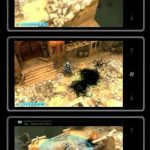Sprint assures that it's getting the Nexus One, too
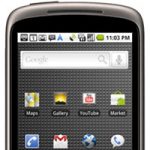
Yesterday, an updated version of Google's Nexus One Android smartphone was released, compatible with AT&T and Rogers Canada's 3G networks. Today, Sprint is letting everyone know that it is getting the device too.
This means that all four major wireless carriers have secured a spot for the Nexus One this year. Google sells versions of the device optimized for T-Mobile and AT&T's wireless networks, and a version for Verizon's network is still expected some time in the Spring, but the operator has not put out any further notices about its availability.
Things to look for at CTIA: America's first 4G smartphone

Sprint is making the bold first move into 4G smartphone market next week, a Wall Street Journal report said today. At that time, the carrier is expected to show off its new WiMAX-enabled HTC Supersonic.
The Supersonic has been a pretty big blip on the Android community's radar for several months, after a whole list of HTC device names was uncovered in a leaked Sense UI ROM last December. Since that time, a few more details have been discovered, and a few blurry spy camera shots and renders have surfaced; but as far as official specs go, there are none. It looks to have the same massive 4.3" screen that the HD2 has, run on the Android platform, and possibly contain a Snapdragon processor.
Two months after the Nexus One, Motorola Droid to get Android 2.1
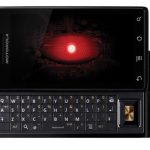
Motorola's Droid has been by far the most popular Android smartphone to hit the US market, selling at a faster pace than the first generation iPhone, and making up, by some accounts, at least 15% of all Android phones in use.
It was the first handset to launch with Android 2.0, a significantly redesigned version of Google's mobile operating system, and it was the first Android device on Verizon, making it a popular choice for the wireless provider's huge subscriber base.
In light of news that it has 'flopped,' Google's Nexus One lands on AT&T and Rogers
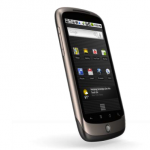
Google's first attempt at directly selling an Android-powered mobile phone is already being called a flop thanks to reports from mobile analytics company Flurry that estimate sales to have been around 135,000 units in the first 74 days on the market (compared to 1.05 million Motorola Droids, 1 million iPhones.)
However, Google's approach to selling the device is vastly different from the more common methods employed by wireless carriers: it has been primarily sold unlocked for $529 directly from Google, or for $179 with a special T-Mobile plan. Since the device was released, there's been a "Coming soon: Spring 2010" section that shows Verizon Wireless and Vodafone as the next US and European carriers.
FCC: Wireless spectrum 10x more valuable for wireless broadband than for TV

The 300+ page National Broadband Plan that the Federal Communications Commission submitted to Congress today contains some logical goals, some ambitious ones, and some that are sure to cause a good deal of conflict between industries.
One of the most contentious issues also happens to be the most important aspect of the broadband plan: the re-allocation of wireless spectrum for the use of mobile broadband.
The National Broadband Plan is complete, now the hard part starts
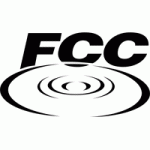
The Federal Communications Commission is expected to deliver the National Broadband Plan to Congress tomorrow, and today the commission released an executive summary of what the document will contain.
FCC Chairman Julius Genachowski called it, "An action plan, and action is necessary to meet the challenges of global competitiveness, and harness the power of broadband to help address so many vital national issues."
Windows Phone 7 Series has Netflix streaming, Xbox Live gaming
Microsoft unveils a host of Windows Phone 7 Series developer tools
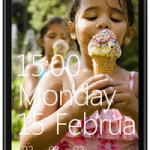
Now that Microsoft has effectively restarted its mobile strategy afresh with Windows Phone 7 Series, third party developers need a way to dig into the platform. So today, Microsoft announced Windows Phone Developer Tools are now available as a free download at developer.windowsphone.com
The tools include: Visual Studio 2010 Express for Windows Phone, Windows Phone 7 Series Add-in for Visual Studio, a Windows Phone 7 Series emulator, and XNA Game Studio 4.0.
Italy launches a beta of Microsoft Tags for tourism

Last week, I wrote a little article about Microsoft's four-color approach to QR black-and-white barcodes, the still-in-beta Microsoft Tag, which was also related to the company's first official Android application.
I only briefly touched upon the many things that are being done with QR codes: advertisements that you scan with your cell phone camera to pull up related content on the Web, business cards that you can scan for an instant call to the card's owner, or boxes that you can scan for an instant Web-based list of contents.
Android vs. iPhone vs. BlackBerry vs. OS X vs. Windows, brought to you by Namco

Namco, one of video gaming's most iconic brands, today announced a new cross-platform game engine called UniteSDK, which will let gamers play with one another irrespective of the platform they're playing their games on.
A user playing a UniteSDK-based game on their iPhone, for example, will be able to play against a PC user, who will be able to play against a Mac user, and so forth.
FCC releases iPhone app to learn more about network conditions

With just six days to go before the National Broadband Plan is due before Congress, the Federal Communications Commission today launched a pair of consumer tools -- an app for iPhone/Android, and a Web-based reporting tool -- to help inform both consumers and the Commission itself about broadband conditions across the US.
The mobile application bundles the Ookla Speed Test (a.k.a., Speedtest.net) and Network Diagnostic Tool together into a single package simply branded "FCC Test." Users can check their downlink/uplink speeds and network latency against different US-based servers, and can then export the results as a .CSV file. The FCC says it may use the data collected from the Mobile Broadband Quality Test to analyze coverage and quality on a geographic basis across the US, but it does not endorse one particular testing application over another, so there may be more tests rolled into the app in the future.
Opera Mini 5 solves some of Android's native browser problems
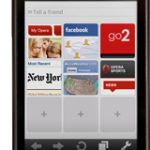
Following up on last week's beta release of Opera Mini 5 for Windows Mobile 5 and 6, Opera software today launched Opera Mini 5 for the Android platform.
With Mini 5, Opera Software has managed to make a cross-platform browser that provides an almost uniform experience across all the operating systems it runs on. Today's release on Android feels almost identical to the version I tested last week.
More 3D TVs launch, this time from Panasonic...but it's still kid's stuff

Yesterday, Samsung launched its 2010 line of 3D TVs, which includes LED, LCD, and plasma screens between 46" and 65", with prices that start at $1,999 and go up to $6,999. Today, Panasonic added its products into the mix at a launch event in New York City with partners Best Buy, 20th Century Fox, and DirecTV.
The event marked the debut of a 3D home theater package that will sell exclusively at Best Buy that includes a 50" Panasonic Viera 3D plasma TV (VT20- $2,499), a Panasonic 3D Blu-ray player (BDT-300 - $399) and one pair of active shutter glasses for 3D viewing. It's comparable to the package Samsung announced yesterday, except that it comes with one fewer pair of 3D glasses. The whole package will go for $2,899, starting today.
Google Maps now generates bike routes
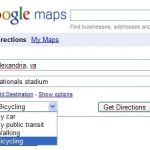
Different modes of travel often require different routes to be taken. If you're walking somewhere, for example, you're not likely to take a highway to get there, and you have the distinct advantage of being able to go through certain structures that cars cannot. The same goes for biking. When someone is planning to get somewhere by bike, they're going to demand different routes. This is why the Google Maps team today announced that it has added bicycling directions to Google Maps.
Shannon Guymon, product manager for Google Maps said, "We wanted to include as much bike trail data as possible, provide efficient routes, allow riders to customize their trip, make use of bike lanes, calculate rider-friendly routes that avoid big hills and customize the look of the map for cycling to encourage folks to hop on their bikes. So that's exactly what we've done."
American cities fight for Google's attention
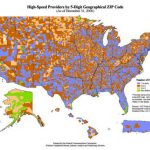
One month ago, Google put the word out that it was looking to build and test its own fiber-to-the-home networks in a couple of cities. The speeds would be up to 1 Gbps and the reach would initially be about 50,000 homes.
Immediately, hundreds of cities began making pitches to attract Google's attention, some earnest, some outlandish.
Tim's Bio
Tim Conneally was born into dumpster tech. His father was an ARPANET research pioneer and equipped his kids with discarded tech gear, second-hand musical instruments, and government issue foreign language instruction tapes. After years of building Frankenstein computers from rubbish and playing raucous music in clubs across the country (and briefly on MTV) Tim grew into an adult with deep, twisted roots and an eye on the future. He most passionately covers mobile technology, user interfaces and applications, the science and policy of the wireless world, and watching different technologies shrink and converge.
© 1998-2025 BetaNews, Inc. All Rights Reserved. About Us - Privacy Policy - Cookie Policy - Sitemap.

